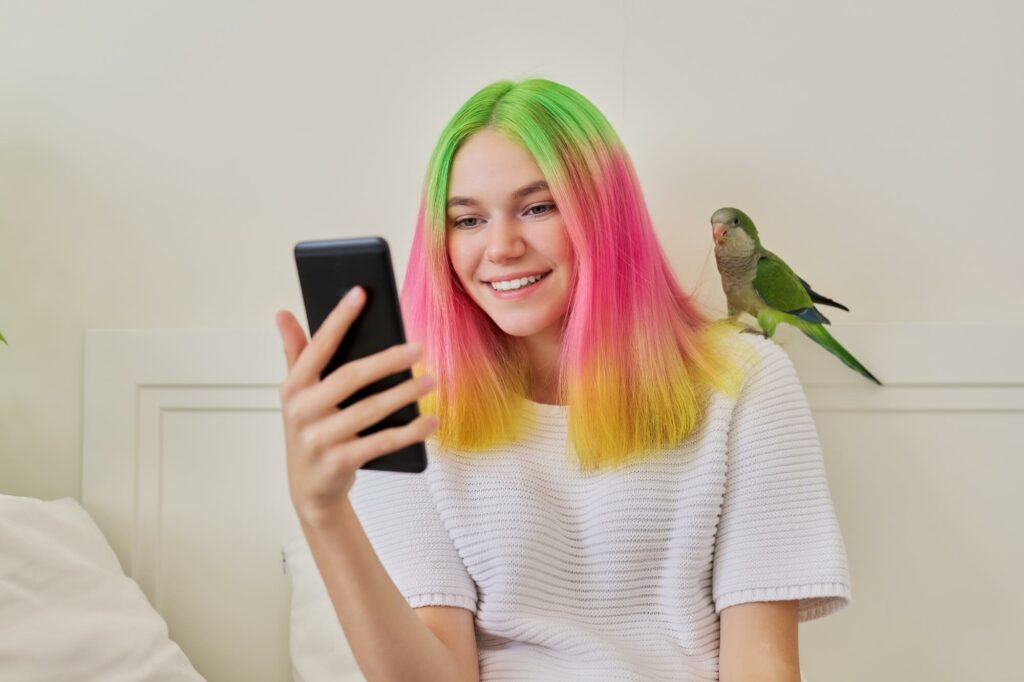Quaker parrots are monk parrots, quaker parakeets, and monk parakeets. Scientifically, they are Myiositta monachus.
Quaker Parrots are fascinating birds. After staying with one for a couple of months, I’d conclude that they are living clowns. They love fun, and they’re pretty energetic.
If you find it problematic to give attention to people, then Monk Parrots are not your best pick. These birds love attention, and in return, you will receive affection and a lot of entertainment. Why so? Watch out because you might fall in love.
Origin
Monks are natives of South America, Argentina. The bird has moved to Southern Florida, Midwest, and the Northeast, where it has also set up colonies. Its natural habitat is in subtropical areas. They, therefore, adapt better to cold climates and urban regions.
In South America, they are major agricultural pests making it illegal to own or sell in some states. Their movement is attributed to expanding eucalyptus forestry to produce paper pulp, giving them resources to build protected nests.
Temperament, Personality, and Behaviour
For a bird its size, Monk Parrots have quite a personality. It has a heart large enough to bond with many people. Compared to some of us human beings, that is quite a pro. This quality makes the bird suitable as a family pet.
Sometimes shorter people tend to amaze you with boldness. Quaker Parrots are the shorter people in this context. Their courage is not belittled even around more giant creatures.
Quaker Parrots are social. They appreciate company more than anything else. When left alone, the chances of them becoming depressed are high. Having two Quakers together will make them grow fond of each other and create a bond as long as they are introduced early enough. The bond will remain tight even after being introduced to the family.
Physical Appearance
Quaker Parakeets are majorly lime green in color. They are gray on their neck, breast, and cheeks on the front. Their grey color is what is believed to have led to their name. Quaker bibs, retro clothing that might not be familiar to some of us, are said to be similar to the neck of a Quaker Parrot. The beaks are horn-colored.
Breeding programs have given a variety of eye-catching mutations to these birds. The blue hybrid is the most popular of them. Other breeds are Albino Quakers, Lutino Quakers, and Cinnamon Quakers.
Domesticated Quaker Parrots weigh way less than the ones in the wild. They are small and are 11 inches long. They weigh up to 14 grams in the wild, but they weigh 100 grams on average. The bird’s home brings about the difference between average and maximum weights.
Distinguishing a male Monk Parrot from a female one can only be done by DNA or feather testing. However, you can tell if it is male or female from the size. Females are usually 10% to 20% smaller. Note that using this is not as reliable.
Quaker Parrot’s Speech and Vocalization
Monk Parrots are bright. They take a short time to learn words. How fast? They take only one to two days. We can not possibly compare them to us human beings; how many days have you taken to learn that new language?
They also weirdly know the right time to say some words, which is quite intelligent. Their speech is unequivocal such that they rival other parrot species.
Their voice can get annoying. When children cry, we tend to give them what they want to stop the crying. For Quaker Parrots, you might think that giving them food will help, but it will not. They are generally loud as they feed. The volume is not ear-piercing, so do not worry about annoying your neighbors.
It is important to note that not all Quaker Parrots are guaranteed to speak. Motivate your bird with food for them to be trained easily.
Care and Nutrition
As mentioned earlier, Quakers love fun. They need toys too. Monk Parrots are uncontrollable chewers.
Safe branches and chewable toys will keep them busy while you are away. You do not want to return home and find all your furniture eaten.
Just like us human beings, you should include a variety of food in the diet of your Quaker Parrots to ensure their health. Fruits and vegetables should be the main component of the meal. Include fruits, nuts, insects, and vegetables in your parrot’s feed.
Ensure you wash your produce thoroughly to remove chemicals to avoid feeding your parrot with toxins. Serve your bird with fresh food since a stale one has a high chance of containing bacteria.
Processed and canned food are harmful to the bird. An exception is made for those that are dried and canned at home. For fruits, remove seeds to avoid choking.
Freshwater is vital for your bird’s diet. Vitamins and mineral supplements are equally safe for your Quaker Parrot.
Quakers do better in large enclosures, but a cage of 18 inches minimum will serve the bird right in a house setting. Make it challenging and well secured since these crafty birds will find a way to open the cage and escape. Keep fresh water inside it for bathing.
Giving the bird proper care and nutrition guarantees a life span of 30 years.
Common Health Conditions
Like most birds, the most common health problem is feather-related. A high-fat diet and a seed-based diet can lead to plucking out of feathers and fatty liver disease.
Losing a home has a high probability of giving the bird a feeling of neglect and feather plucking stress.
Wrap Up
Quaker Parrots have a great personality. If you are looking forward to purchasing one, you made the best choice. If you are looking for a bird to talk to, then you should try this intelligent breed since the bird is quite a fast learner. Do not forget to give them attention; you don’t want to have a depressed pet.








